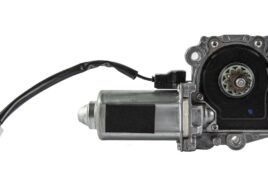Bruce Jenkins • President • Ora Research

Examples of (a) random sampling, (b) full factorial sampling and (c) Latin hypercube sampling, for a simple case of 10 samples (samples for τ2 ~ U [6,10] and λ ~ N [0.4, 0.1] are shown). In random sampling, there are regions of the parameter space that are not sampled, and other regions that are heavily sampled. In full factorial sampling, a random value is chosen in each interval for each parameter, and every possible combination of parameter values is chosen. In Latin hypercube sampling, a value is chosen once and only once from every interval of every parameter; it is efficient, and adequately samples the entire parameter space. Source: Hoare et al., Theoretical Biology and Medical Modelling, 2008
The numerical methods that underpin design space exploration have been long known—and sometimes applied, when the attendant costs in expertise, time and labor could be justified. What’s changing now is the rapidly maturing generation of software tools transforming these powerful but formerly difficult-to-use methods into practical everyday engineering aids.
Before diving into how design space exploration works, how does it relate to design optimization in a product development project? Chris Mattson, director of BYU’s Design Exploration Research Lab, offered this perspective: “Design optimization depends on a well-posed optimization problem formulation, which generally includes (i) a well-defined objective function, (ii) inequality and equality constraints, and (iii) the expression of stakeholder preference, all of which are likely to be multidisciplinary in nature. In an arguably real way, such a problem formulation predefines the optimum solution, thereby allowing the mathematical rigor of the optimization to lead to the optimum design by an iterative, computational search.”
“Design exploration, on the other hand, assumes that the optimal design is initially unknown and initially uncharacterizable,” Mattson continued. “The process of design exploration discovers design conditions and little by little (often through some form of experimentation) characterizes what an optimal design looks like. Once this is known, the final solution can then be found through a convergent design optimization algorithm.”
The essential quantitative method for design space exploration is design-of-experiment (DOE) studies. In a DOE study, an analysis model is automatically evaluated multiple times, with the design variables set to different values in each iteration. The results identify which variable(s) affect the design the most, and which the least. This information allows variables that are not important to be ignored in subsequent phases of the design process, or set to values that are most convenient or least costly.
Concretely, a designed experiment is a structured set of tests of a system or process. Integral to a designed experiment are response(s), factor(s) and a model.
A response is a measurable result—fuel mileage (automotive), deposition rate (semiconductor), reaction yield (chemical process).

Response surface model. Source: Noesis Solutions
A factor is any variable that the experimenter judges may affect a response of interest. Common factor types include continuous (may take any value on an interval, for example, octane rating), categorical (having a discrete number of levels, such as a specific company or brand) and blocking (categorical, but not generally reproducible; an example is automobile driver-to-driver variability).
A model is a mathematical surrogate for the system or process.
The experiment consists of exercising the model across some range of values assigned to the defined factors.
In deciding what values to use—more precisely, in deciding on a statistical strategy for selecting values—the goal is to achieve coverage of the design space that will yield maximum information about its characteristics with least experimental (computational) effort, and with confidence that the set of points sampled gives a representative picture of the entire design space.
Numerous statistical sampling methods exist. Which method to use depends on the nature of the problem being studied, and on the resources available—time, computational capacity, and how much is already known about the problem.
The results of a DOE sampling process are then used to generate an approximate model of the system being studied, called a response surface model (RSM). The RSM is generated by interpolating between the discrete DOE results to create a continuous surface map or model. The RSM is a convenient and efficient tool for visualizing the design space, examining relationships among design variables and their effects on key responses, and rapidly evaluating design alternatives—all without the need to perform additional expensive CAE evaluations or experiments.
Filed Under: MORE INDUSTRIES





Tell Us What You Think!